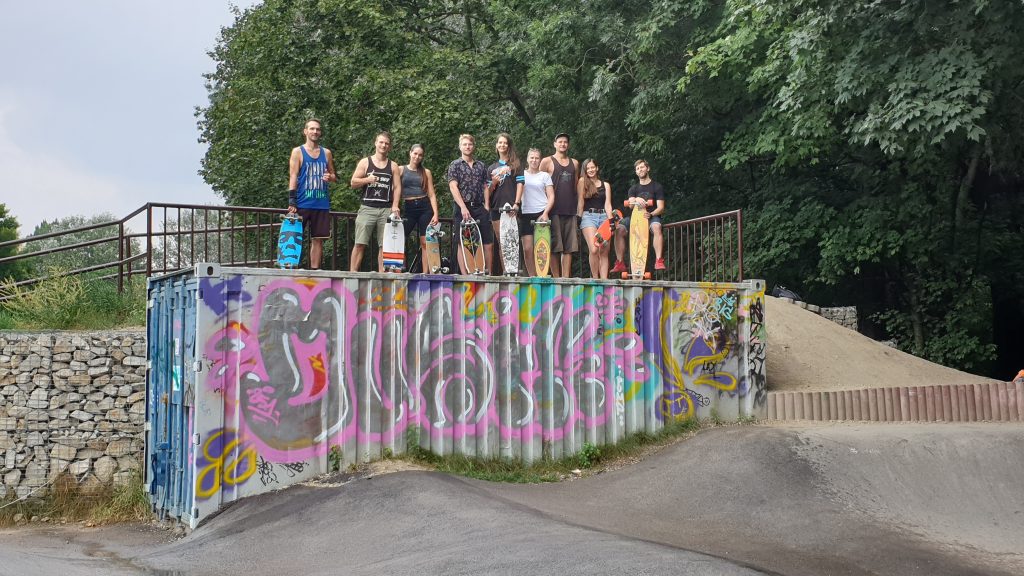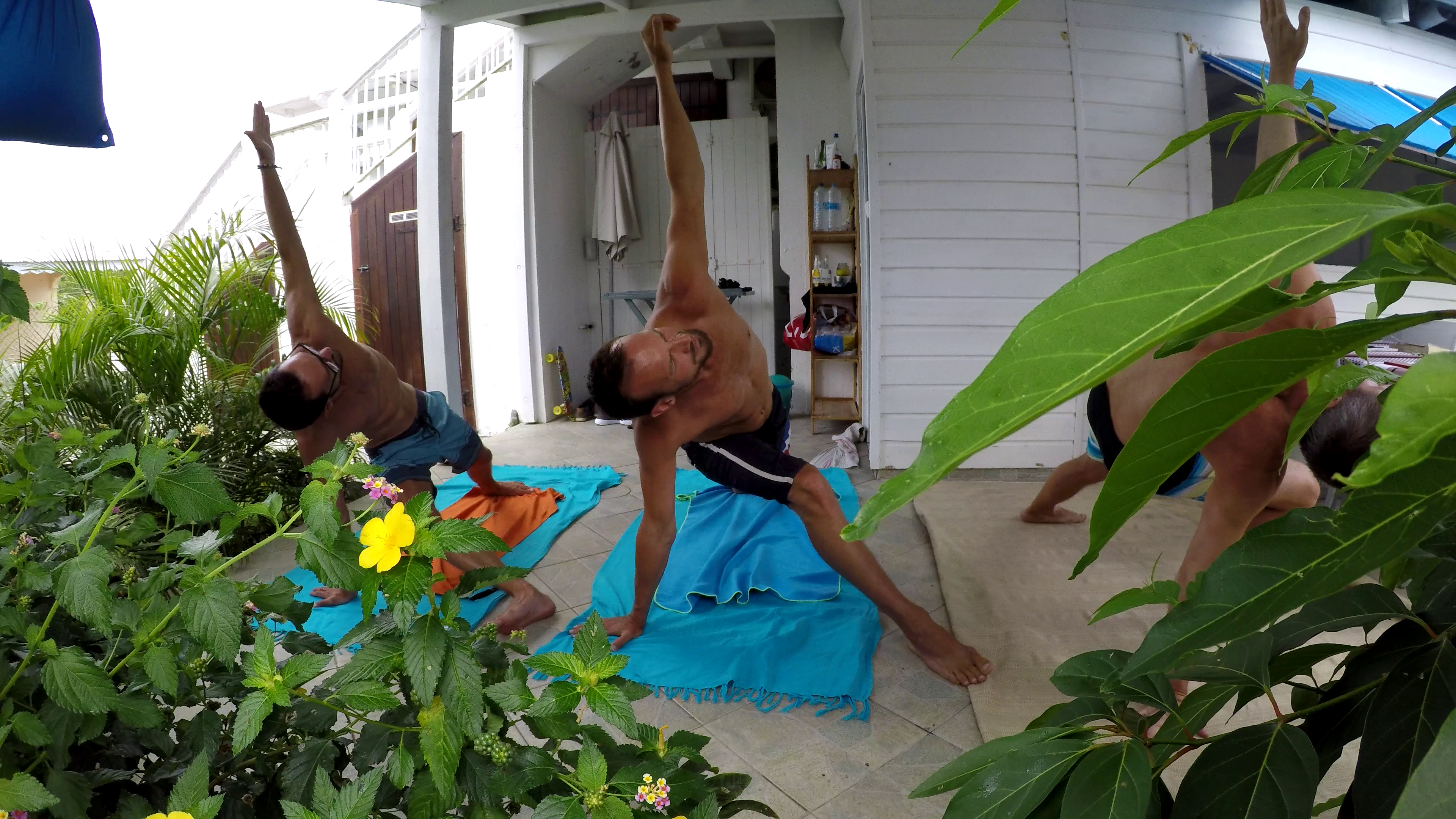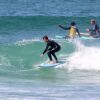Surfing is a great activity, there are millions of people who prefer surfing as their dose of physical exercise over others like gym, running or football. And while most of us don’t have any aspirations to become professionals, it is still a good idea to ask ourselves this question:
Do I actually need to do any dry training before going surfing?
The answer mostly depends on your accessibility to surf waves regularly and your goals & dedication to surfing better. But in general, I like to use this catchy phrase.
Don’t rely on surfing to get you fit – get fit to surf!
The truth is, that surfing is so difficult that it’s better to get prepared. Many times I’ve seen the frustration of surfers who finally get the chance to surf the best waves of their life, but fail due to their poor fitness. If you ever want to see some progression in your surfing, you better get in shape.
How to train for surfing?
You’ve probably already seen how the pro-surfers train. A lot of them like to post some instructional YouTube videos, some even created an app or a subscription-based training program. And if you like surfing as much as I do, you’ve probably tried it, or even bought the program and went through a couple of the lessons.
Because who wouldn’t want to be fit like a pro surfer?
If you’re still following some of the pro’s training programs, that’s great! I admire your endurance and I hope you’ll reach your goals.
While it’s great to get inspiration and advice from the best, be sure to take on only as much as you can handle in order to avoid injuries or loss of joy in what you are doing.
Most of the average mortals don’t have the stamina, long term motivation, or enough time to train like the pros. Those guys are much more fit because they train every day since they were kids. And their motivation is boosted by tasty sponsorship deals.
So what kind of training is good for an average surfer?
My answer is – take it simple. If you are a beginner, intermediate, or even a slightly advanced surfer, any kind of regular physical activity will help.
And the best training is the one that’s easily accessible and most fun for you.
If you can surf regularly, that’s your best training. Just add enough stretching for flexibility, recovery, and injury prevention.
But unfortunately, most regular surfers can’t surf every day. Either because the conditions are not good, or they are too busy or too far away from the ocean. That’s why we should do at least some physical training to keep us fit for the next surf session. Especially if we’re striving for any progression in our surf performance next time we hit the ocean.
Good surfers need to have power, flexibility, speed, balance, endurance, and a strong mind too.
So whether it’s a gym workout, yoga, swimming, running, bike, ski, football, volleyball, or anything else that you like to do, it may be good training for surfing too. You don’t need to stick to painful or boring workout routines if you can do the same while having fun at some other sports. Just make sure you’re doing it right and cover all the skills by being variable & creative.

Here’s some of my favorite free practises – accessible almost anywhere & anytime.
Stretching – Strenght side
I wish I’ve learned about the importance of stretching earlier. But like most young people, I found stretching boring & painful. The problem is, every time you do any sport without proper stretching, you’re also hurting your body by sacrificing a little bit of your muscle & joints health. And it multiplies with age!
If you really want to still surf after 35, you better start stretching now.
Of course, the other great benefit of stretching is flexibility – one of the most important skills for surfing. It’s essential not only for doing big turns or airs but you also need to be flexible even for basic techniques like pop up, duck dive, or cutback.
Well, if you are like me, one thing is to know all this important information, and the other is actually motivate myself to do 10 or 20 minutes of strange movements before & after a surf session.
Here’s the trick I’ve learned: Try to find a routine or method that is most interesting for you, for example by mixing it with a little bit of core or strength training. Other fun ways could be for example stretching through yoga, or practicing with your kids.
And there is a bonus too: If you stretch regularly, you don’t need to do it right before or after surfing. You can do a proper stretching session anytime during the day and just a short warm-up before, and quick cool down after the sessions.
So after a little bit of research, I’ve discovered Strenght side on YouTube.
At first, the guy may look a little bit weird, wearing pink pants and a strange haircut, but his way of explaining exercises is quite smart and I like his positive & humble approach. He’s got loads of other videos about bodybuilding, but feel free to select only the stretching episodes as I do. Right now I’m following his stretching routines almost every morning, the first thing I do after I wake up.
You can start your day with a very simple movement meditation:
In time I’ve even come to enjoy this type of morning routine and I’ve started adding my own more advanced or surf-related stretches (one day, I’m going to post my own video too).
Yoga – Patrick Beach
For many years, I was resisting the yoga movement. I gave it a try a couple of times, but it was either too girly or too gymnastic for me. I was also discouraged by a lot of people doing yoga just because it’s trendy and cool. So I was not very happy when yoga took over the surfing world. Nowadays we have a couple of yoga studios in every surf town, you see yogis on every surfing beach and each surf camp offers yoga as a complementary activity. Naturally, I was bound to try again and again until I found a way of doing yoga that suits me.
I still don’t know the difference between Ashtanga, Vinyasa, Hatha, and others. And I’ll probably never learn any of the ancient pose names. Neither am I able to breathe exactly as they teach. But I found a way to enjoy this type of exercise so I can do it regularly and I can already see the benefits of it and the positive effect on my surfing.
The yoga style that I like to practise could be described as:
- Self-study, online practice – I never went to any studio
- Slow flow, but some power moves
- No extreme poses, only slightly pushing my limits
- Not too much of that spiritual things, but a little bit of movement meditation, and breathwork
After trying out a couple of youtube videos & mobile apps, the one that suits me the most is a free channel from Patrick Beach. He’s pretty good at explaining and his style is challenging, but not too much to become impossible for non-yogis. Well, at least until he doesn’t start to show off his handstand skills 🙂
And why is yoga good for surfing? While some of the yoga moves may look ridiculous, they are strengthening all the little muscles & joints that are needed for surfing while giving your body much better coordination, flexibility & balance too.
There are so many types of yoga, feel free to explore and find your way too!
No gym workouts – Movement parallels life
If you want to add a little bit of workout but you hate dumbells or gym machines, this guy’s exercise lessons may be for you. You can throw it anytime & anywhere, no equipment needed!
Again, the movements may feel a little bit strange at first. But this is the kind of core strength & mobility that surfers require.
Paddle power
Paddling is the most important skill in surfing. And it’s actually the hardest to simulate out of the water too. If you can’t go surfing regularly, but live near a lake, consider going for a flat day paddle session from time to time.
There are two important aspects of good paddling:
- Muscle build-up
- you will need mainly triceps, traps, lats & deltoid
- try to focus on explosiveness, not on the mass gain
- Good technique
- this is almost more important than the muscles
- effectivity is the key – I’m planning to post a full article about a proper paddling technique…
The good news is that once you gain both muscles and technique, you can maintain your paddling power with only occasional training. And you should be back in your best form after a couple of days back in the ocean.
If you can’t find a suitable lake, or it’s too cold outside, the closest thing to paddling is of course a swimming pool. Another alternative that works surprisingly well is the rowing machine – I recommend it strongy.
Cardio – Running
Just like yoga, I wasn’t a fan of running for a long time. Buying expensive shoes, posting GPS tracks to Facebook, running marathons, and all that stuff… So I was doing a lot of mountain biking and swimming. Both of them are great for cardio and surf training too. But the more I surf, the less time & money I have for bikes or visiting swimming pools.
That’s how I discovered the beauty of running – you just open the front door and you are working out!
No time is wasted and no money is needed (those cheap shoes are just fine). So instead of 1 bike trip a week or 2 times going swimming, I can now run 3-4 times and I can do it in less prime times like mornings instead of only weekends or evenings.
One more thing I like about my running is that I can spend some quality time with my dog who likes to run along. We are so lucky to have the option to go out in the woods as I don’t like running on asphalt or concrete. Running in the outdoors is much more fun too and the challenging terrain can simulate the ever-changing tempo of a surf session.
Balance – Slackline
Balance is essential. Not only in surfing but in everything in our life.
If you are a beginer, consider getting a balance board to get your skill quickly leveled up.
After a while though, it will become a little bit boring so the next level will be a slackline. To become any good, you will need strong core, legs, ankles and all the little muscles on your feet. That’s good controling for your board too!
All in – Surfskate
If you only had to choose one tool for your surf training, I would definitely recommend a surf skate. To me, discovering it was like a revelation.
Surf skate is a skateboard with special trucks that simulate the behavior of a surfboard in the waves.
You can learn pumping (generation of speed) in a day. And you can practice your turns forever – something that’s impossible on the few good waves that we catch in the ocean.
It’s good fun too, the closest thing that a wave deprived surfer can get. Just be careful as wiping out on concrete has much more consequences compared to water.

Of course, there are other activities that can be good for your surf training like stand-up paddling, snowboarding, or even Muay Thai and beach volleyball. Choose your own path, get out there and explore. The most important thing is that you enjoy your journey.




